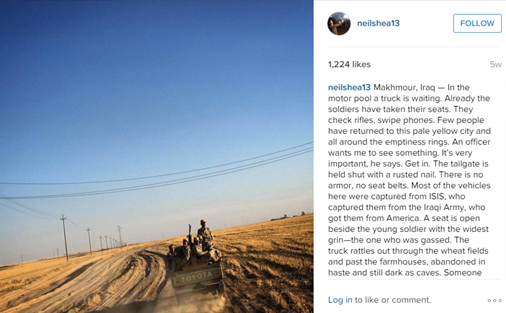Whilst the printing press is pretty much in its dying days and the world turns to digital, all we have to blame is technology.
But why does anything need to be to blame? That insinuates that it’s a bad thing and personally I don’t think it is. It is simply a sign of the times. Yes we all like to read a newspaper now and again, the familiarity of black smudges on our hands and inevitably, faces and the smell of ink in our nose – how could we not love it? But we also like to have news in front of us, when we want it, all the time, as soon as it happens.
You don’t get that immediacy with print.
I feel like this conversation has been happening for years and yes print has been in decline for a long time but this conversation will continue for years to come. Newspapers will be around for a long time yet, but it’s good to get used to the new kids on the block.
- 24 Hour News Channels
- Rich Media
- Smartphones
- Apps
- Social Media
24 hour news channels are definitely a contender in the journalism world but they are nothing new. I’m pretty sure you’ve all watched a news channel at one time or another and they have a very clever way of keeping you hooked, especially when news is breaking. There isn’t really a better way to watch breaking news; to have all the ‘facts’ in front of you immediately. For example when the Paris attacks were happening, they were receiving updates throughout the night as well as combining the news with pictures and videos surfacing online.
I’d rather focus on platforms a little less known about. News apps I think, are in this category. I have had a news app on my smartphone for quite some time, however I still meet people who didn’t know this was possible. Just as fast as Sky News (other news organisations available) are receiving its updates, they are appearing a few seconds later on the Sky News app and what’s even better – they are sent via a push notification to my phones home screen.
Rich media, social media and smartphones in themselves are the by-product of being online. Unlike a newspaper with text and pictures, the internet allows for videos and music to add more value to a story whilst smartphones means you can go anywhere and curate, create, produce and publish a story at any time as well as receive said story with nothing but an internet connection. Social media doesn’t need explanation.
So what’s really new?
During my research into the future of Instagram I have thankfully stumbled upon the fascinating account of Neil Shea (https://www.instagram.com/neilshea13/) who I have since found out, has been one of the few very vocal people in the world of Instagram journalism.
Here is a new way of publishing stories I had never thought of and until I saw it in practice, did not believe would work.
Not only does Neil produce some incredible photos of the war zone in which he is reporting but also writes stories to go with them.

“I always come back from the field with full notebooks, and so many of those stories don’t make it into the final magazine. So I’ve always been looking for ways to use those stories in another way.”
With the potential for 300 million readers, the motivation is strong and with the compelling stories he uncovers, I think Neil has found something great.
At the end of the day what is the real future of journalism?
It’s the people. If there’s anything the technology has given the people, it is power.
The world has a voice and whether you have a blog, a twitter account, a smartphone or any other of the many platforms on which you can share a story, then you can be heard.
